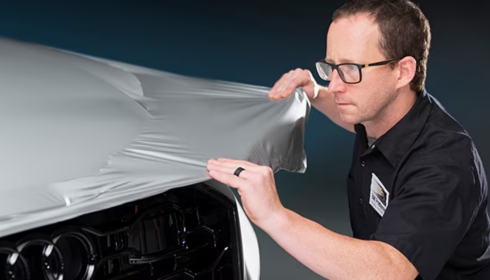Cars are more than just machines. For many of us, they’re a symbol of pride, freedom, and even personality. That’s why it stings a little when you notice the first rock chip on your hood or that swirl mark under the sunlight. No matter how careful you are, daily driving takes its toll on the paint. And that’s where paint protection film (PPF) comes in — a thin yet powerful layer designed to save your car from scratches, chips, and the elements that constantly threaten its shine.
But let’s be honest — choosing the right PPF and installer can feel overwhelming. Brands, shops, warranties, prices… it all gets blurry fast. So, let’s walk through it together in a more down-to-earth way.
What Makes Paint Protection Film So Essential
Imagine your car parked outside a grocery store. Shopping carts zoom by, kids swing backpacks around, and someone’s bicycle handle brushes past your fender. Even without a big accident, your paint is under attack. PPF acts like invisible armor. It absorbs impacts, resists staining, and even has self-healing properties where minor scratches literally vanish with a little heat.
That’s not marketing hype; it’s advanced material science. Polyurethane film stretches, protects, and bonds seamlessly to painted surfaces. Unlike a wax or ceramic coat, it physically blocks the damage instead of just reducing it.
Why 3M Remains a Trusted Name
Among the many films out there, the 3M Scotchgard Pro Series PPF has built a reputation that car enthusiasts and professionals alike respect. What sets it apart isn’t just the glossy finish or the strong protection. It’s the durability and consistency.
3M has decades of experience in adhesives and films, so this product comes with years of research behind it. It’s designed to resist yellowing, peeling, and cracking while maintaining that new-car look. And because it’s so clear, most people won’t even notice you have it on — except for the fact your car looks flawless years later.
The Difference Between a Good and Bad Installation
Now here’s the thing: even the best film won’t do much if it’s poorly installed. Think of it like a tailored suit. The fabric can be top-notch, but if the stitching’s crooked, it won’t look right. With PPF, a bad install can leave bubbles, edges lifting, or seams in awkward places.
That’s why when I searched for PPF installation near me, I realized how varied the results were. Some shops had glowing reviews and photos of clean, professional work. Others looked like they were offering bargain deals, but the results didn’t inspire confidence. It quickly became clear that skill matters just as much as the product.
Finding Someone You Can Trust
If you’re serious about protecting your car, the best move is to find a certified PPF installer. Certification means the installer has been trained directly by the manufacturer, knows the techniques, and understands how to work with your car’s curves and tricky spots.
It’s not just about cutting the film correctly — it’s about preparation, precision, and care. A certified installer knows how to make the film hug the bodywork seamlessly so it looks like part of the paint, not a cover sitting on top of it.
The Long-Term Payoff
Here’s the part most people underestimate: PPF isn’t just about vanity. Sure, it keeps your car looking sharp, but it also helps preserve value. A car with original paint in excellent condition commands higher resale prices. For collectors or anyone leasing a high-end vehicle, the difference can be thousands of dollars down the line.
Think of it like insurance. You’re not hoping for damage, but you’re glad the protection is there when life happens. And unlike insurance, this is a one-time investment that keeps paying you back every time you avoid a scratch or ding.
Everyday Benefits You’ll Notice
There’s also the day-to-day peace of mind. Drive on the highway without wincing at every pebble that bounces up. Park at the mall without worrying about careless doors opening next to you. Wash your car without stressing over fine scratches.
It’s a subtle change, but you’ll notice the difference in how relaxed you feel about your car. That kind of peace is underrated until you experience it.
Is It Worth the Cost?
Let’s not dance around the question: PPF isn’t cheap. Quality film plus professional installation can run into the thousands, especially for full-body coverage. But think about the alternative. Repainting a bumper alone can cost a few hundred. A hood respray? Sometimes over a grand. And repainted panels almost never look as good as the original factory finish.
So while it feels like a big upfront expense, it’s really just shifting the cost from constant repairs to a single layer of protection. Over the lifetime of ownership, the math often tilts in favor of PPF.
Final Thoughts
At the end of the day, protecting your car is about balance. Some drivers are fine with the occasional scratch — cars are meant to be used, after all. Others treat their vehicles like rolling art and want every detail perfect. Wherever you fall on that spectrum, PPF gives you an option to protect your investment in a smart, invisible way.
If you’re considering it, don’t just grab the cheapest option. Look at reputable films, ask questions, and trust certified installers. Your car deserves better than shortcuts.
And when you finally drive out of the shop with that film freshly applied, you’ll notice something subtle but powerful: your car looks the same… but somehow more untouchable. And that’s a feeling worth investing in.


